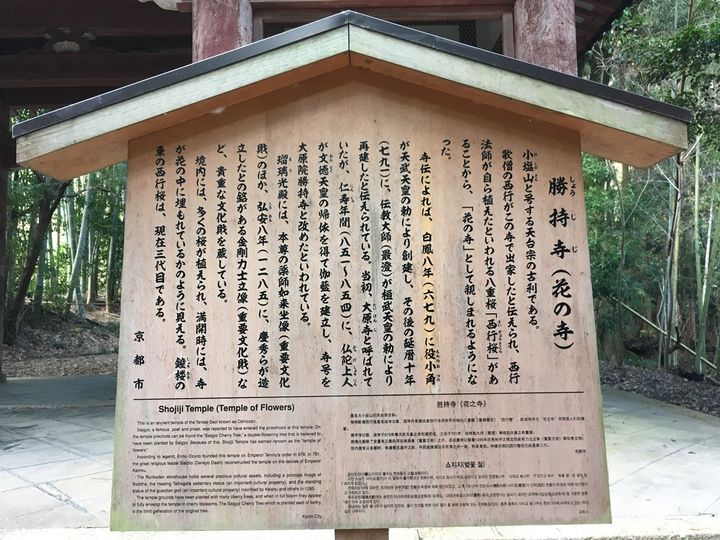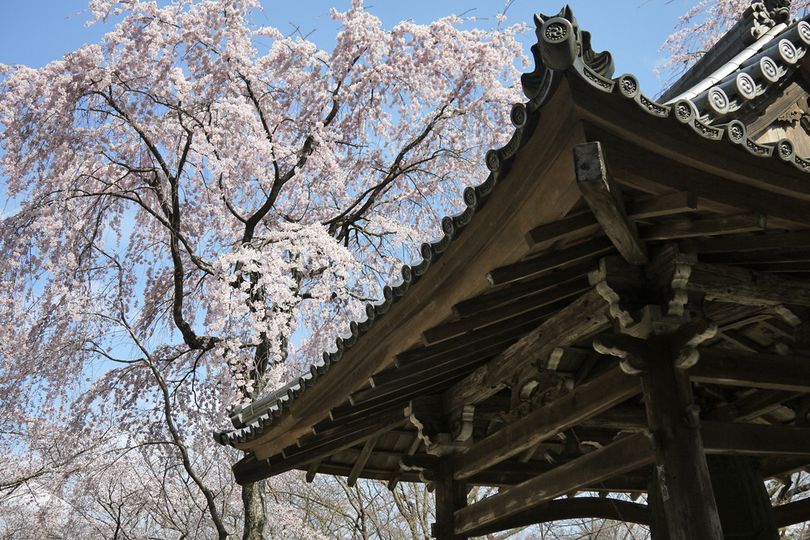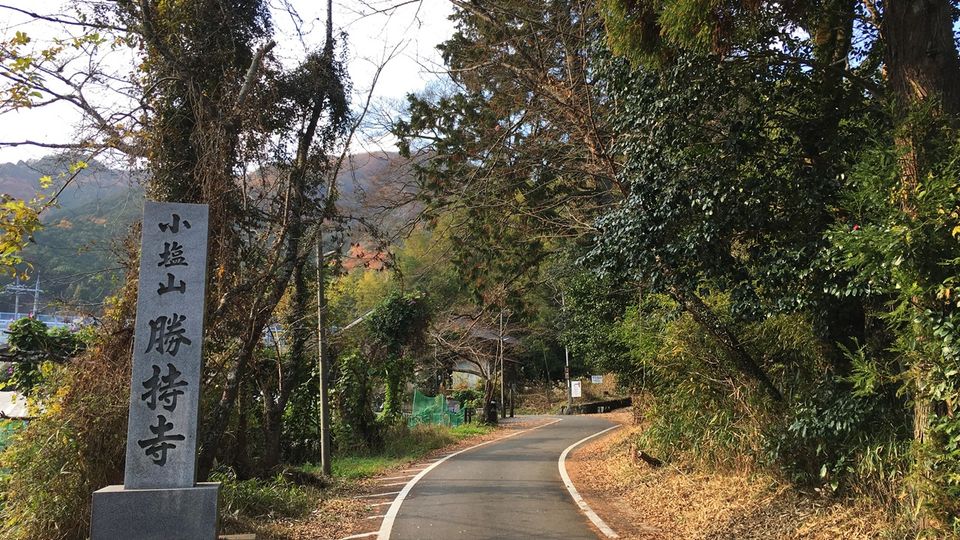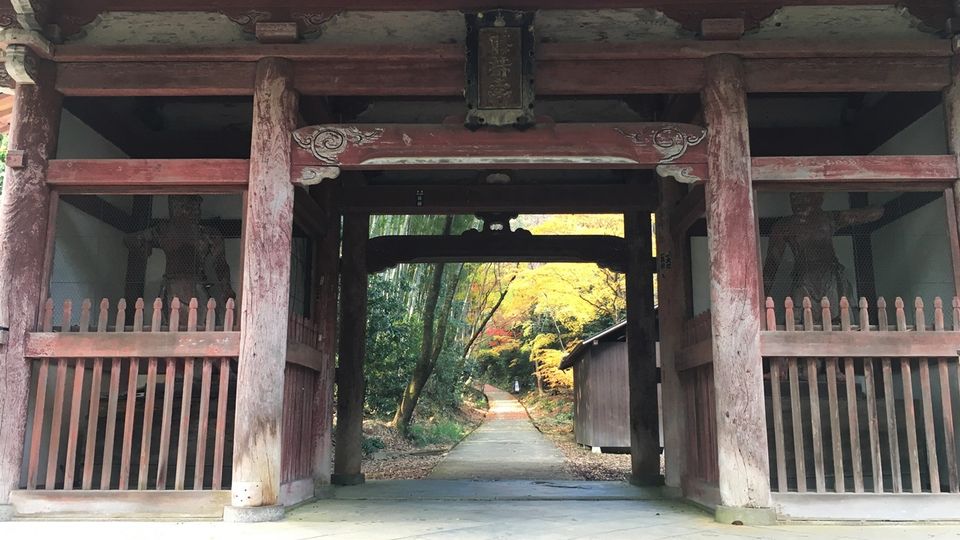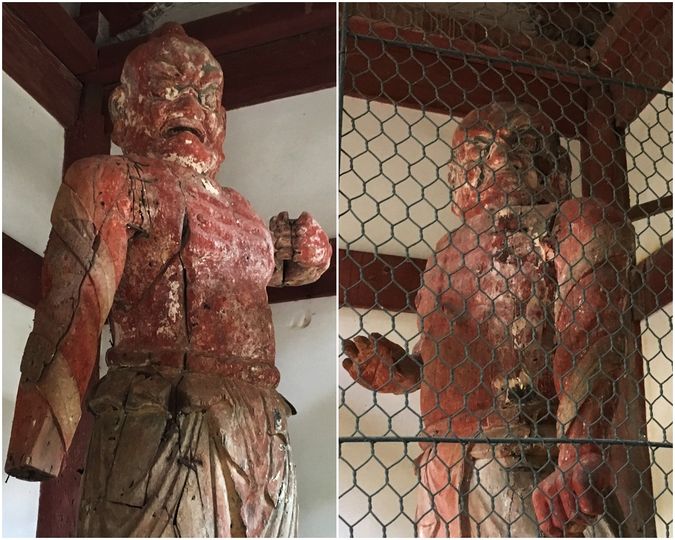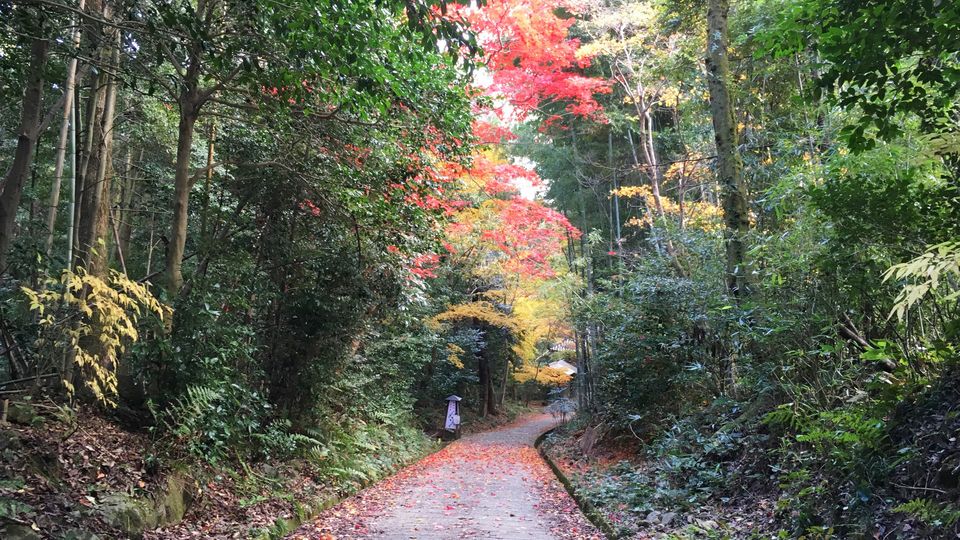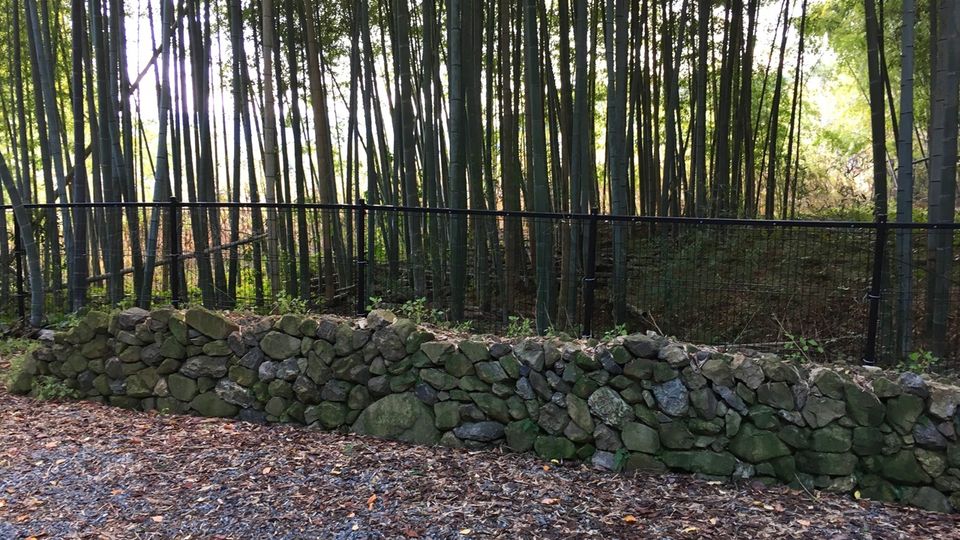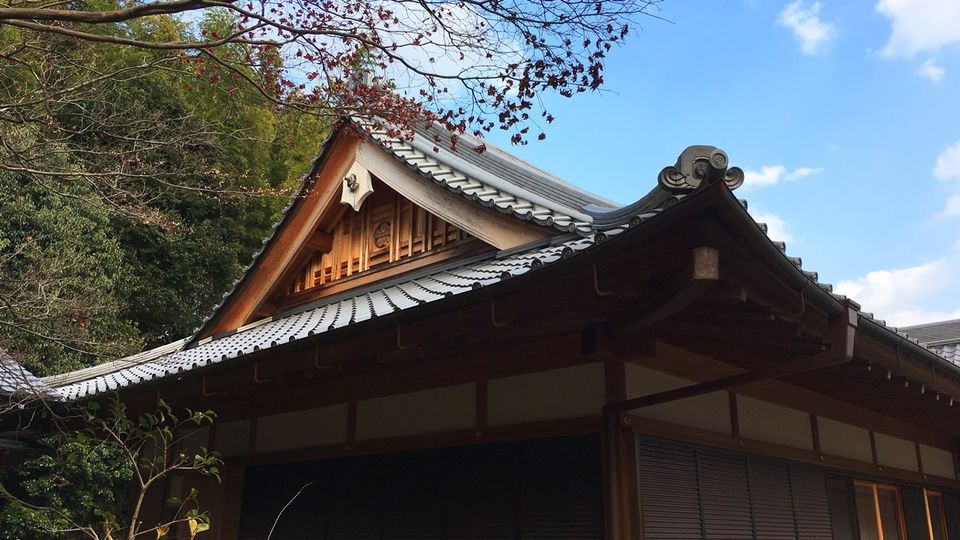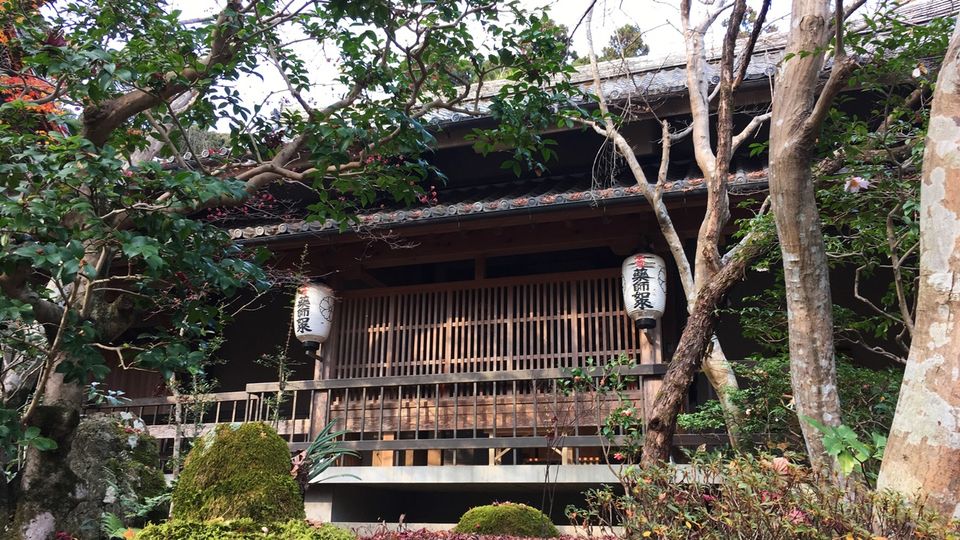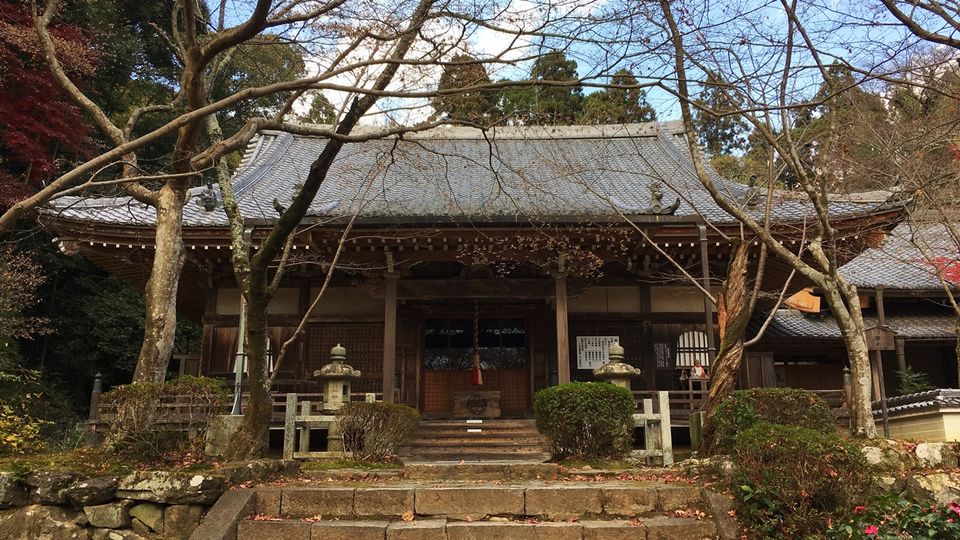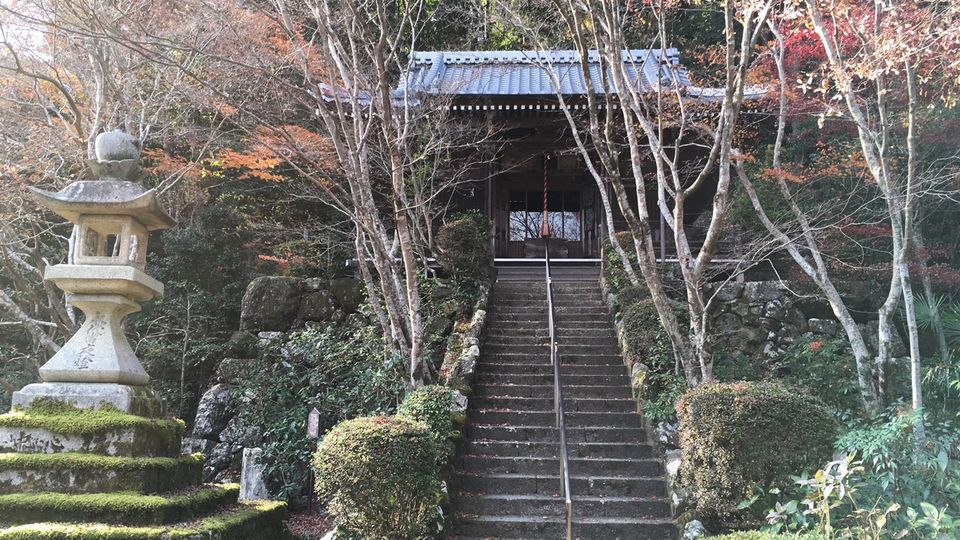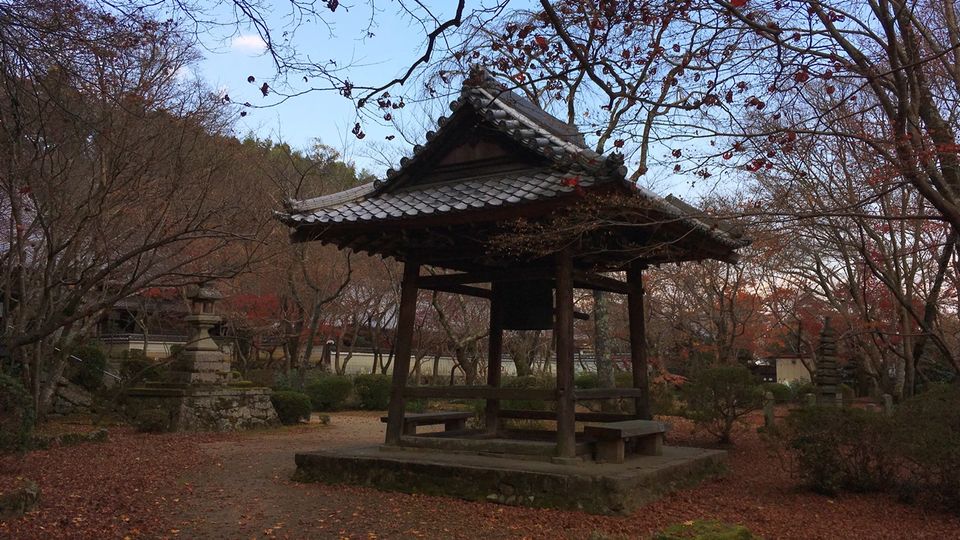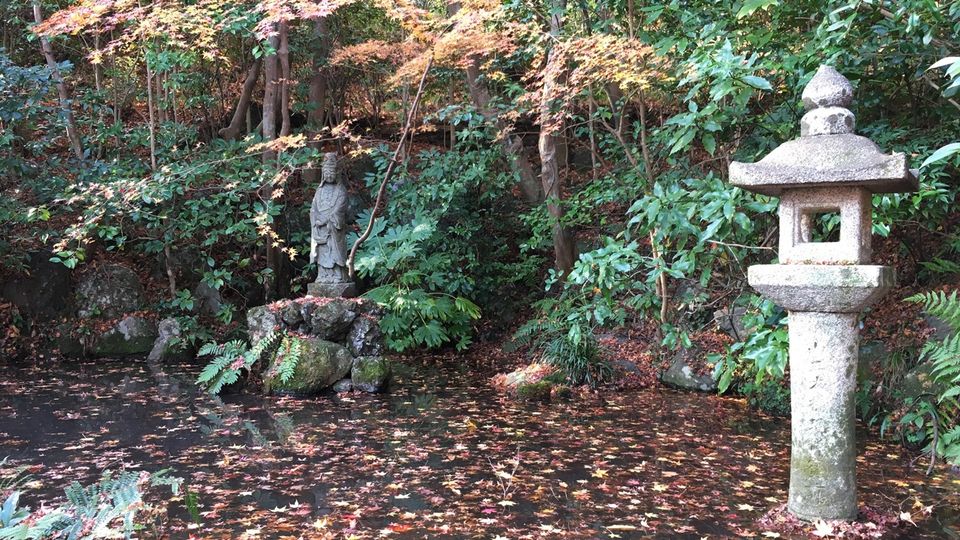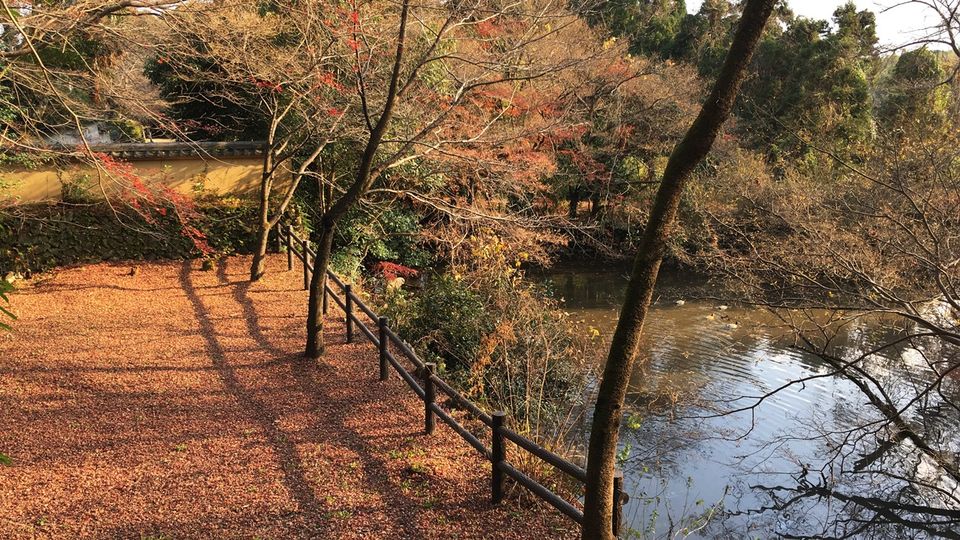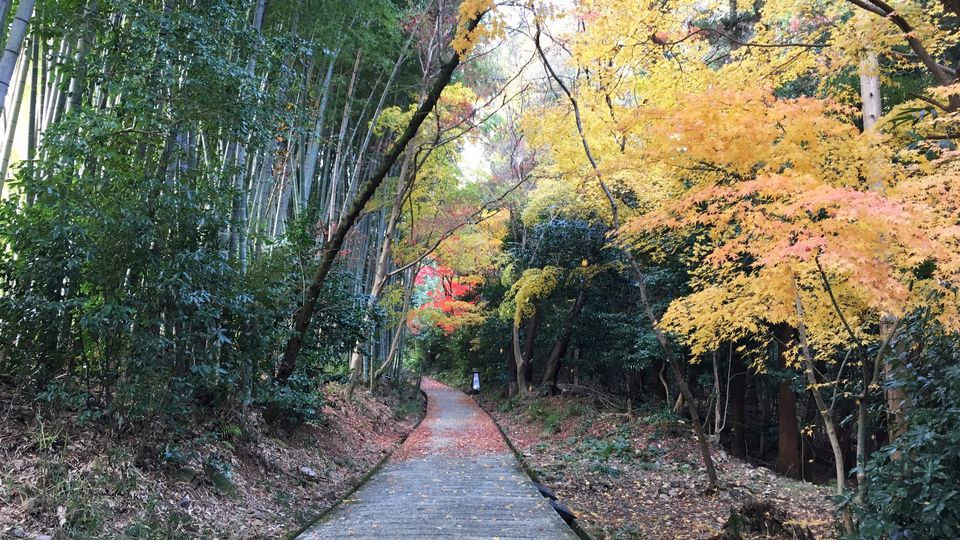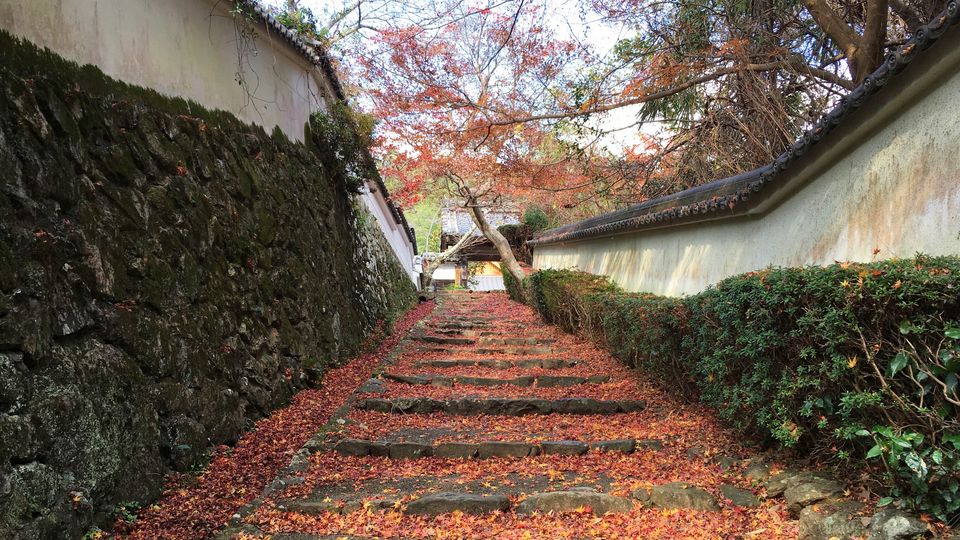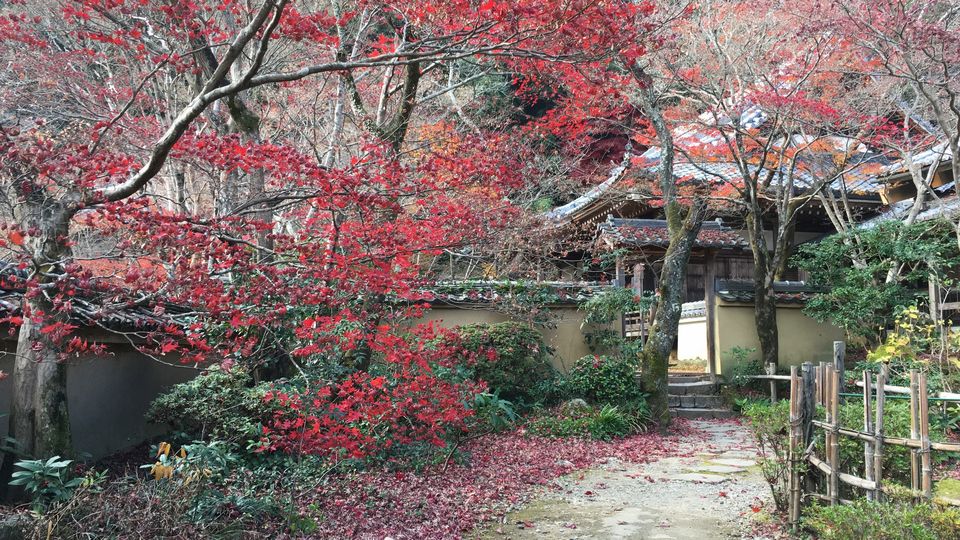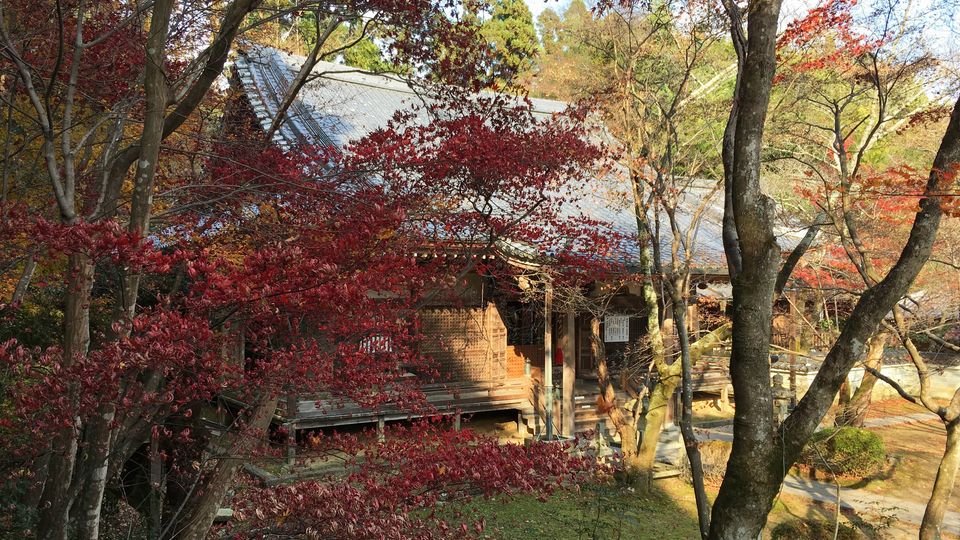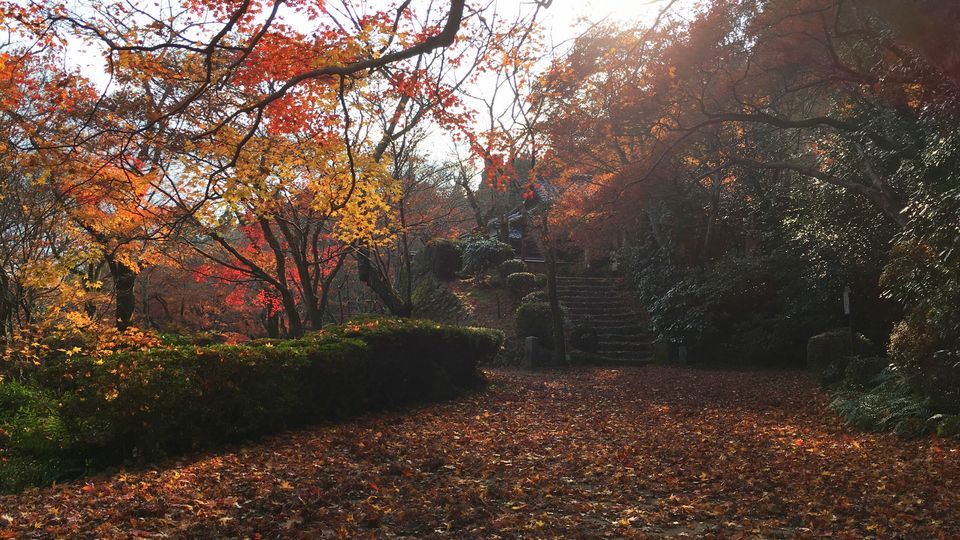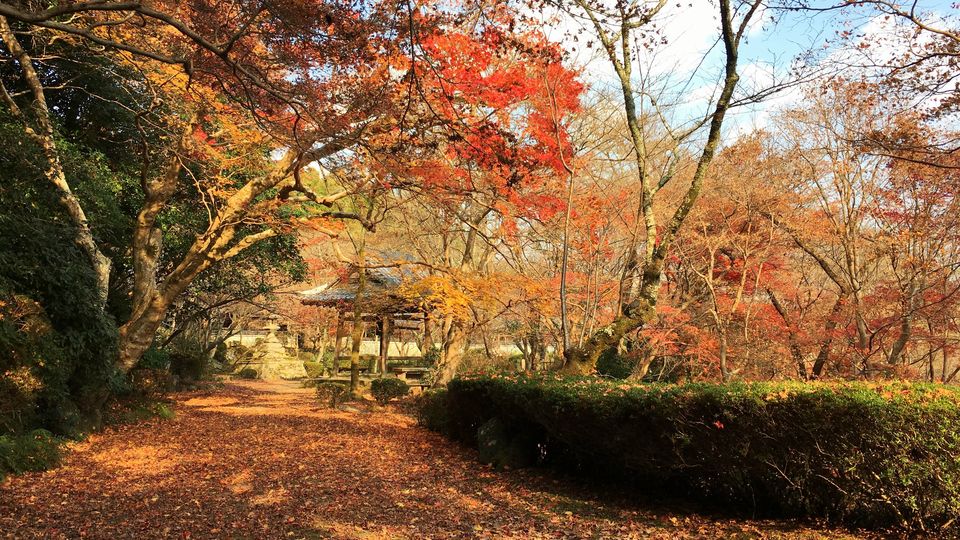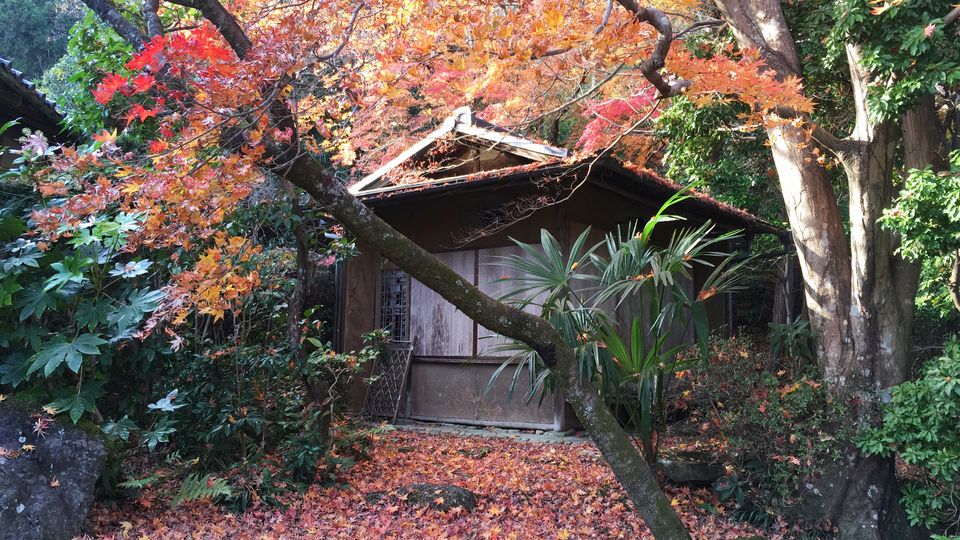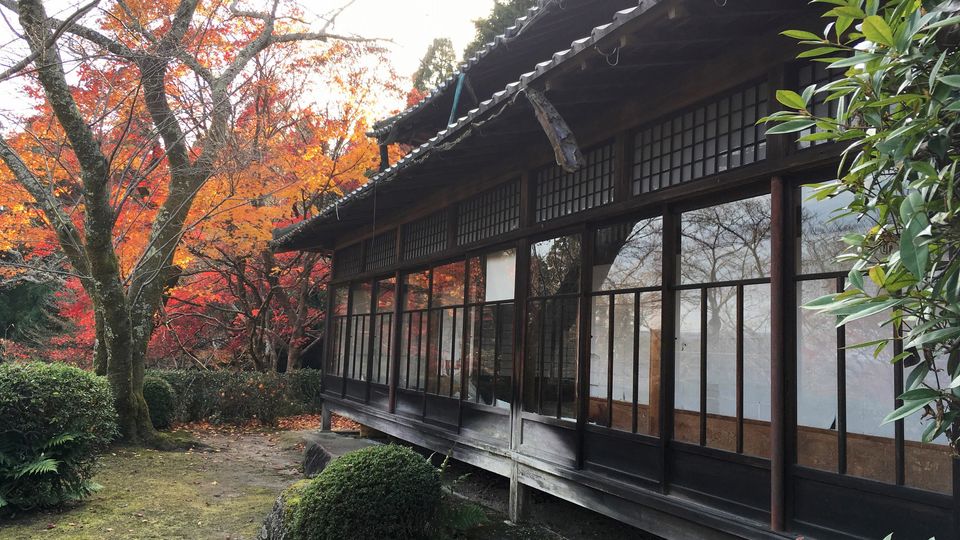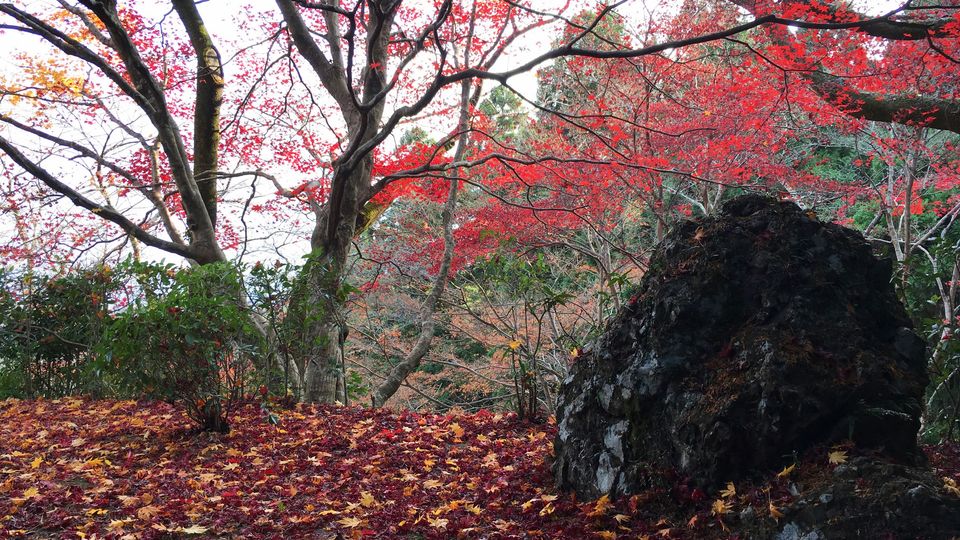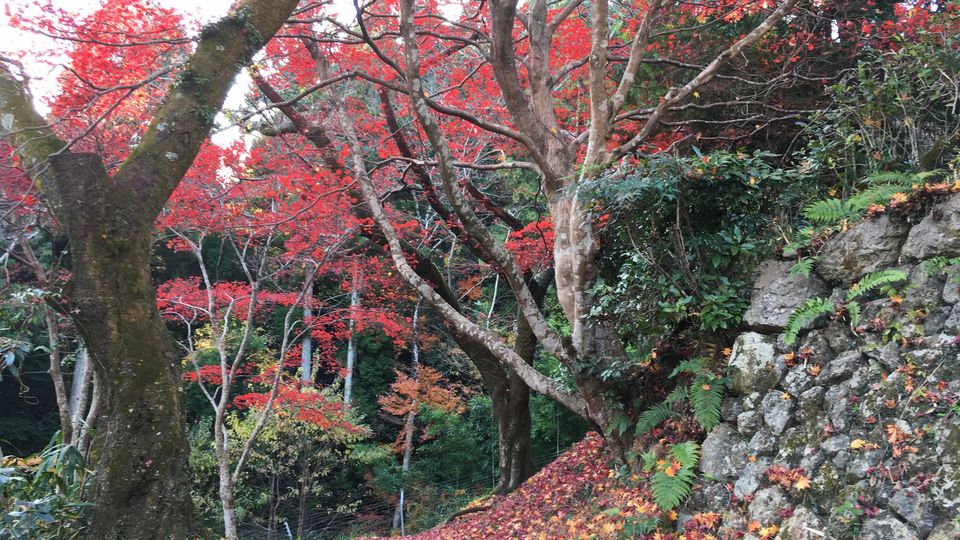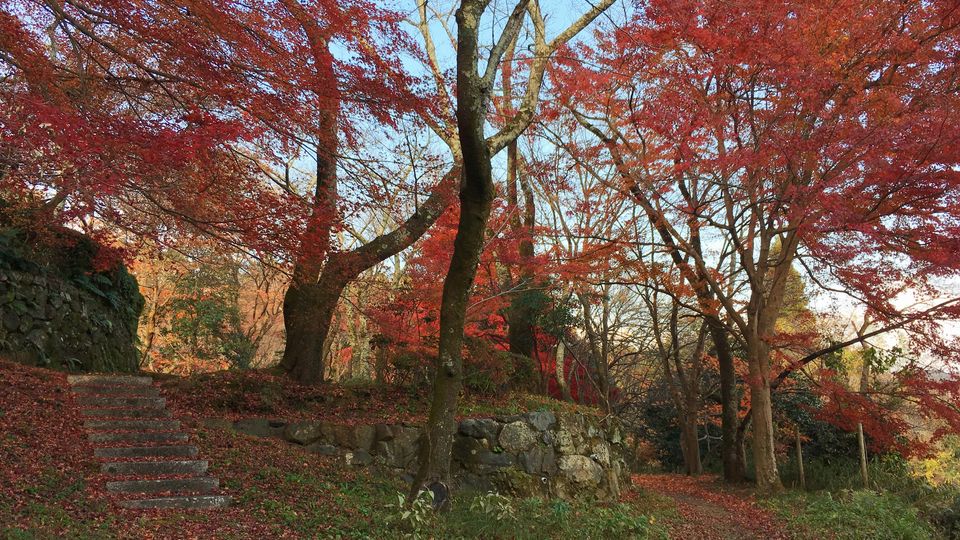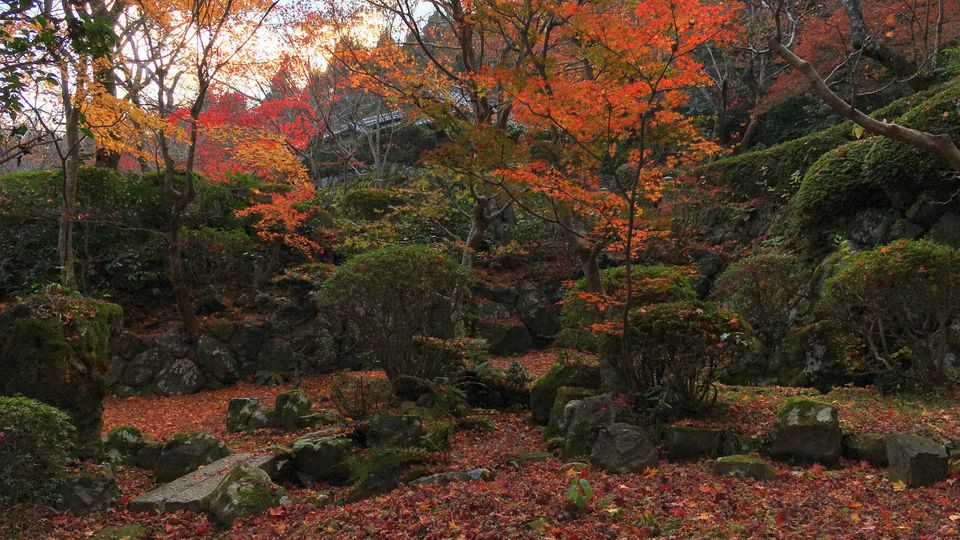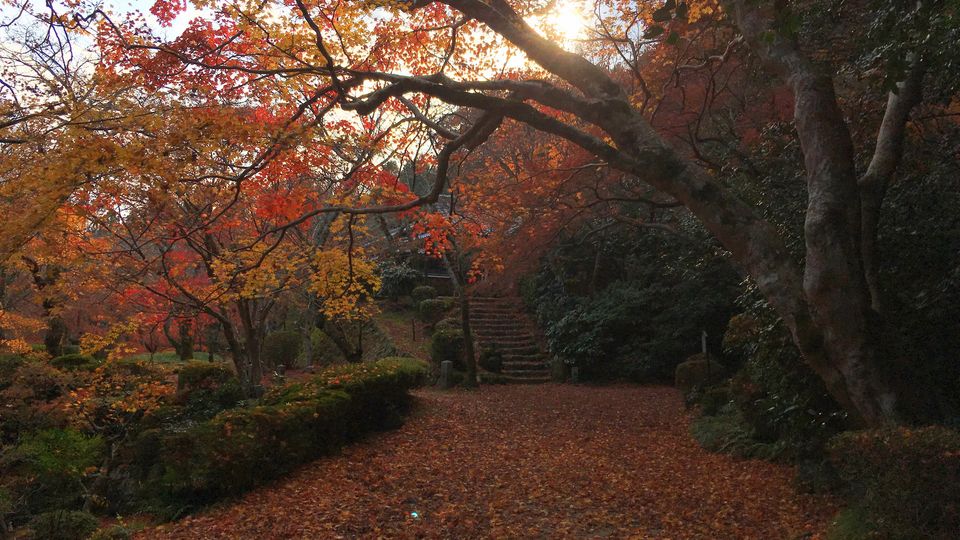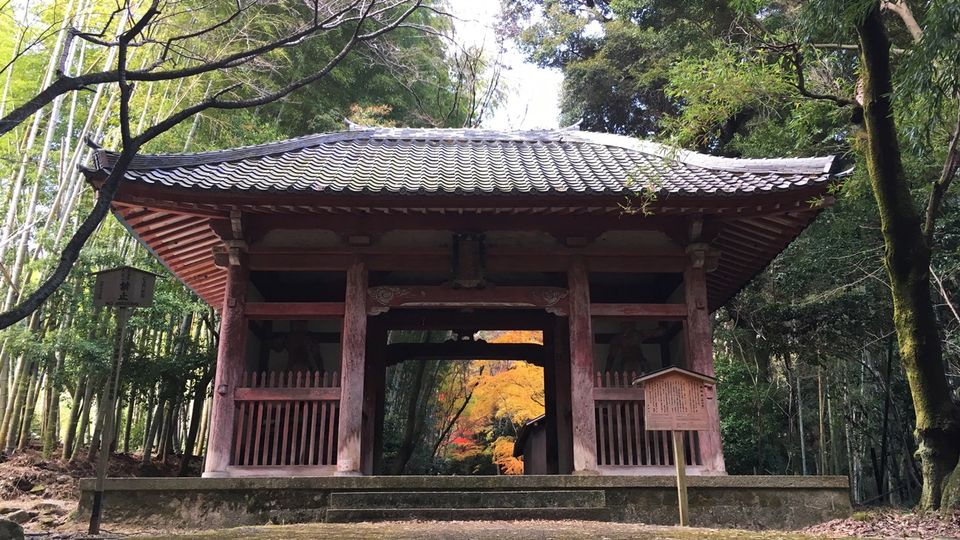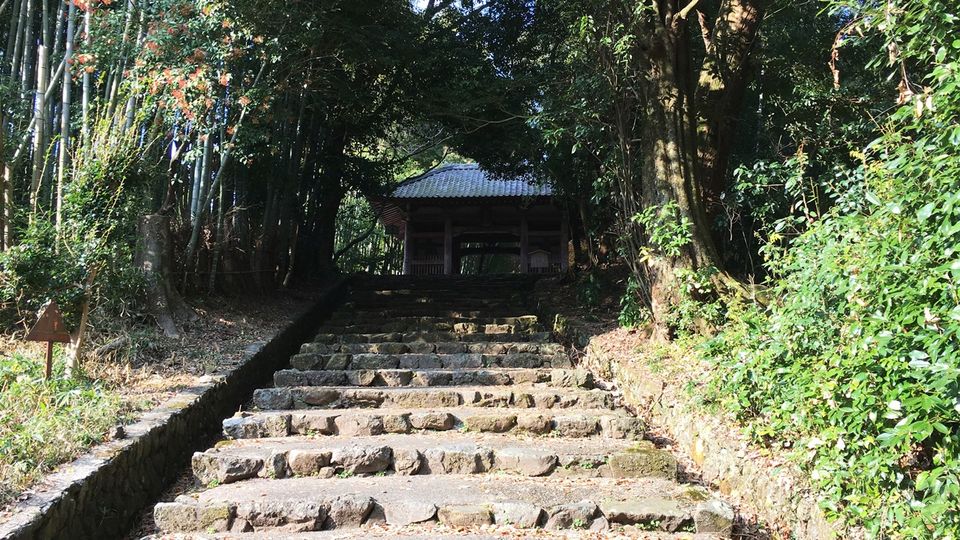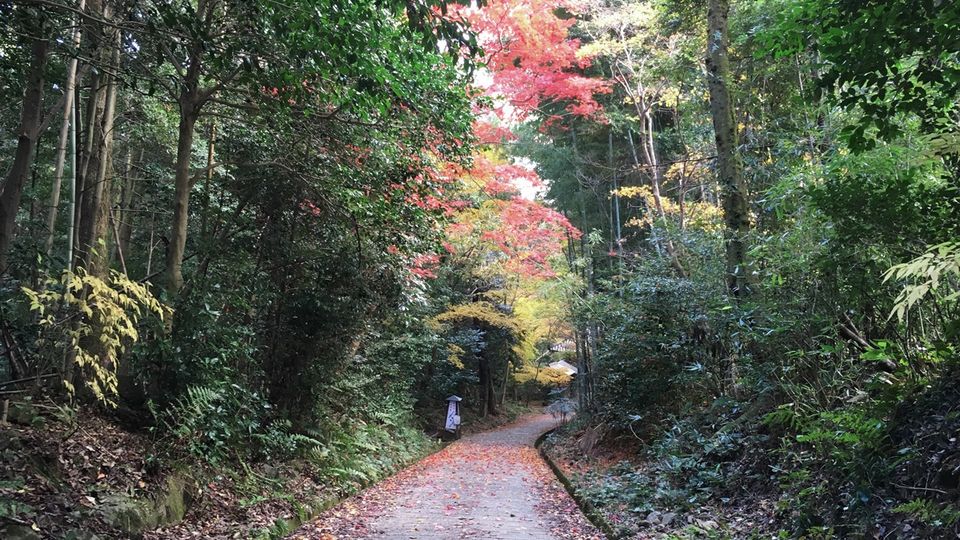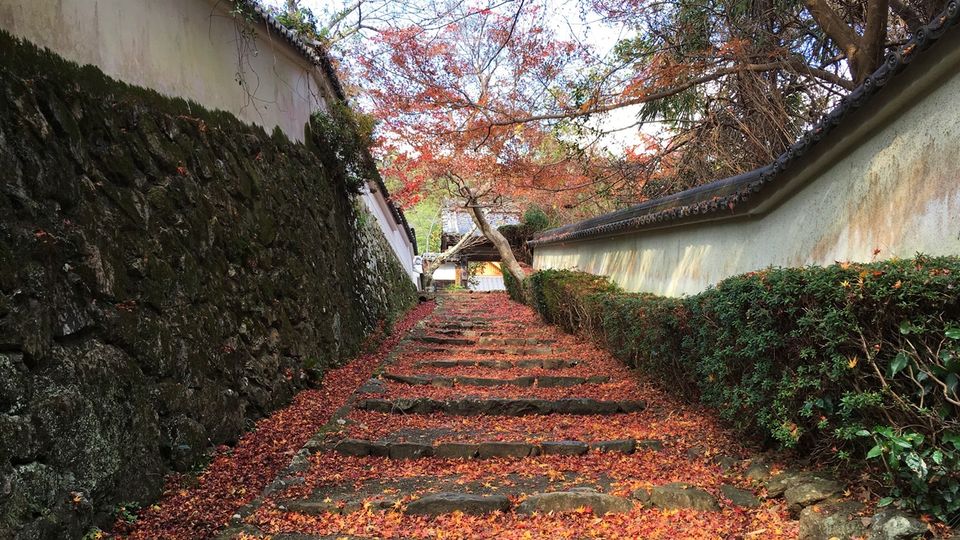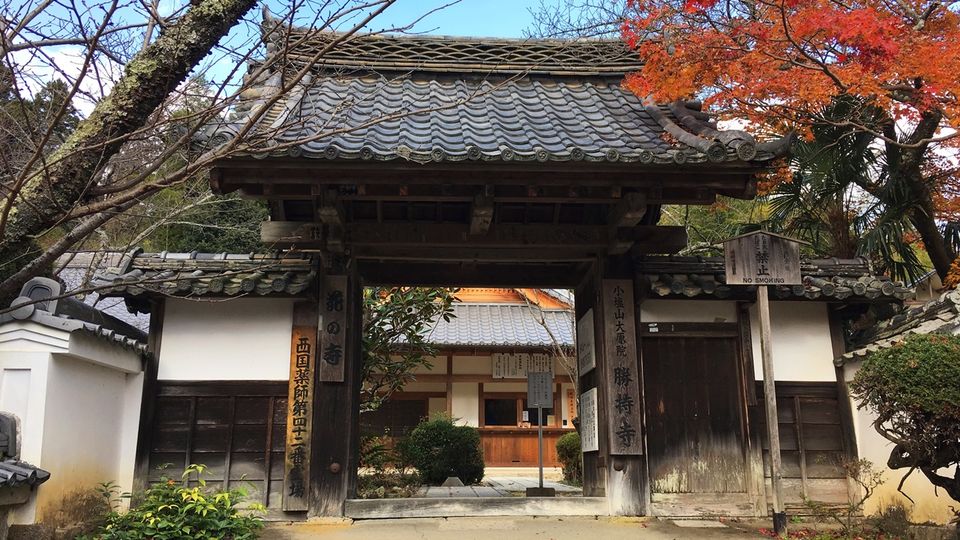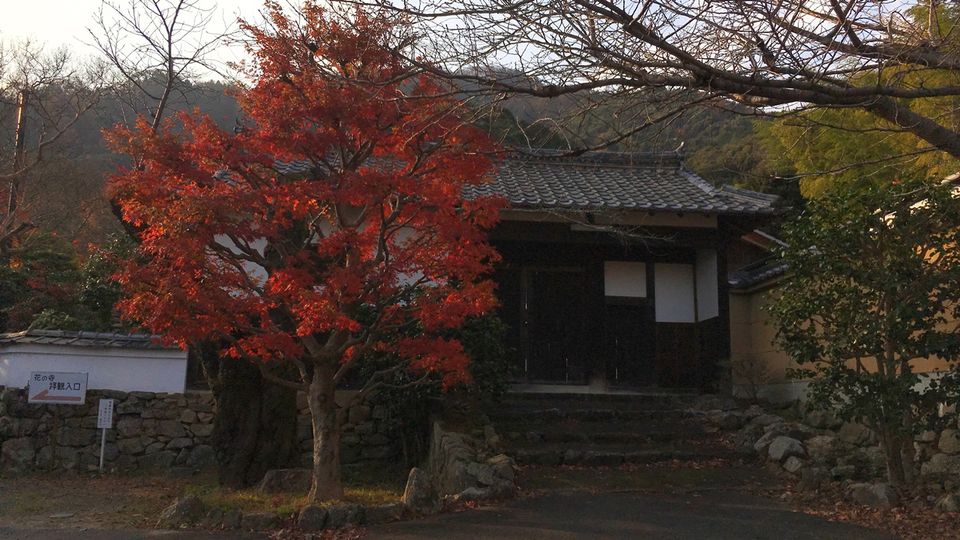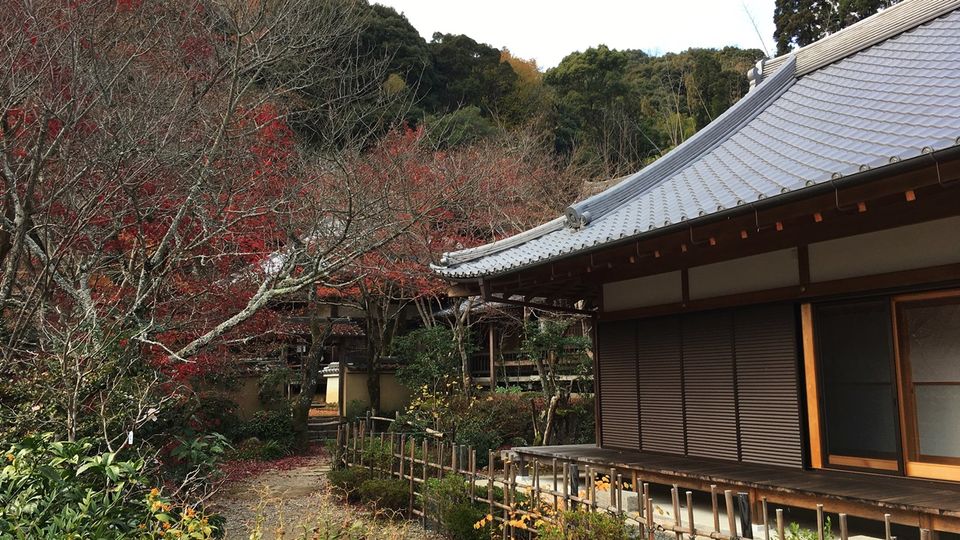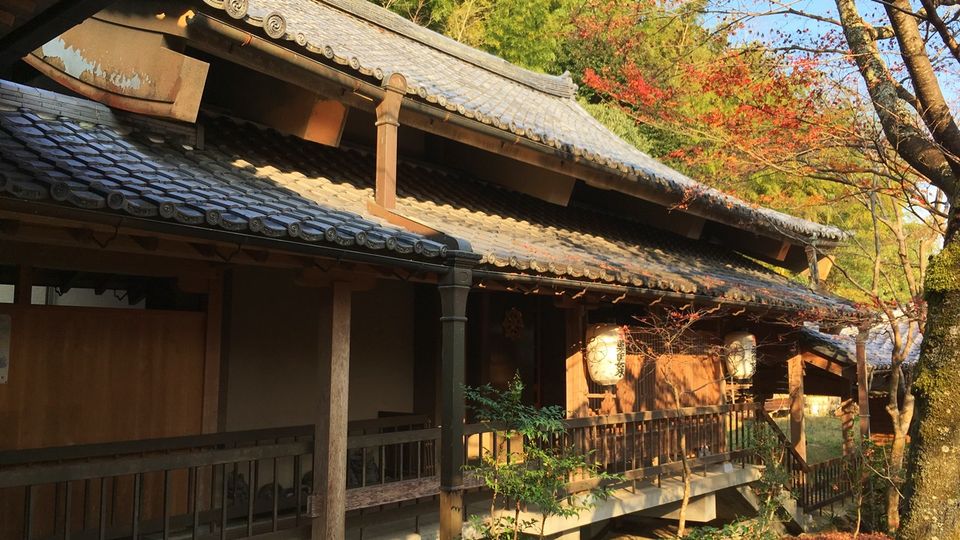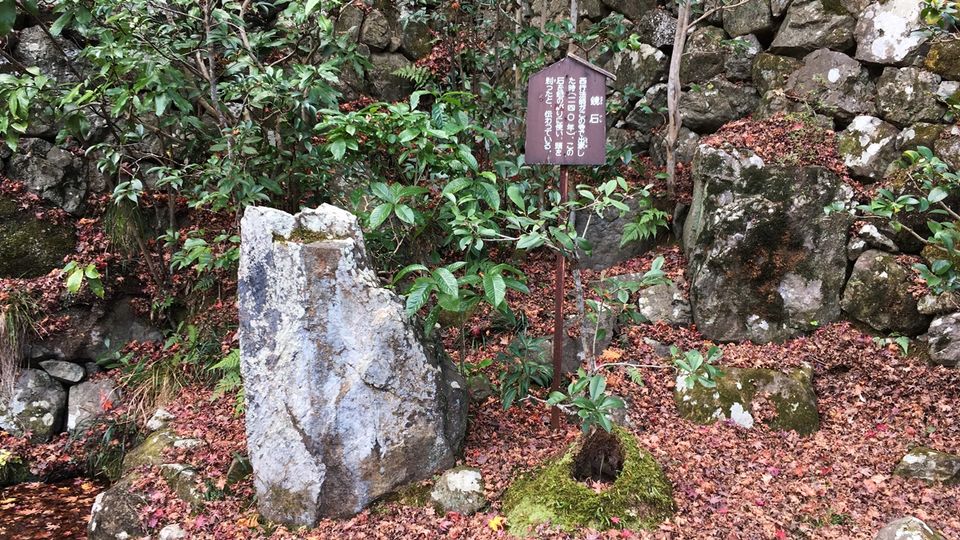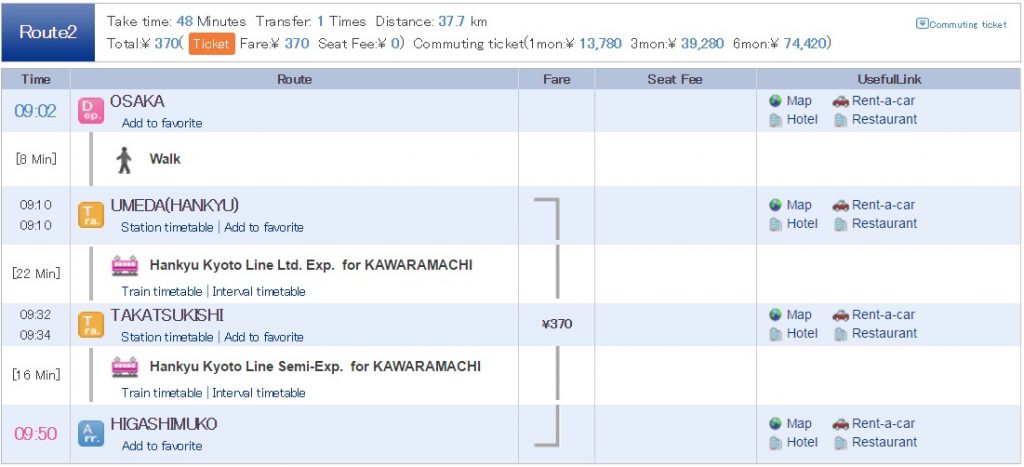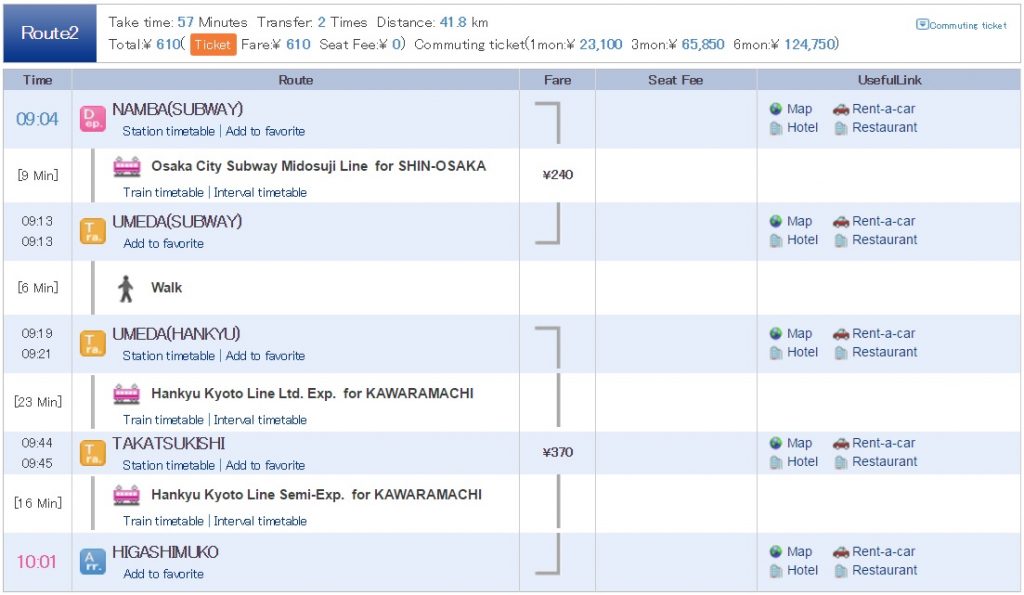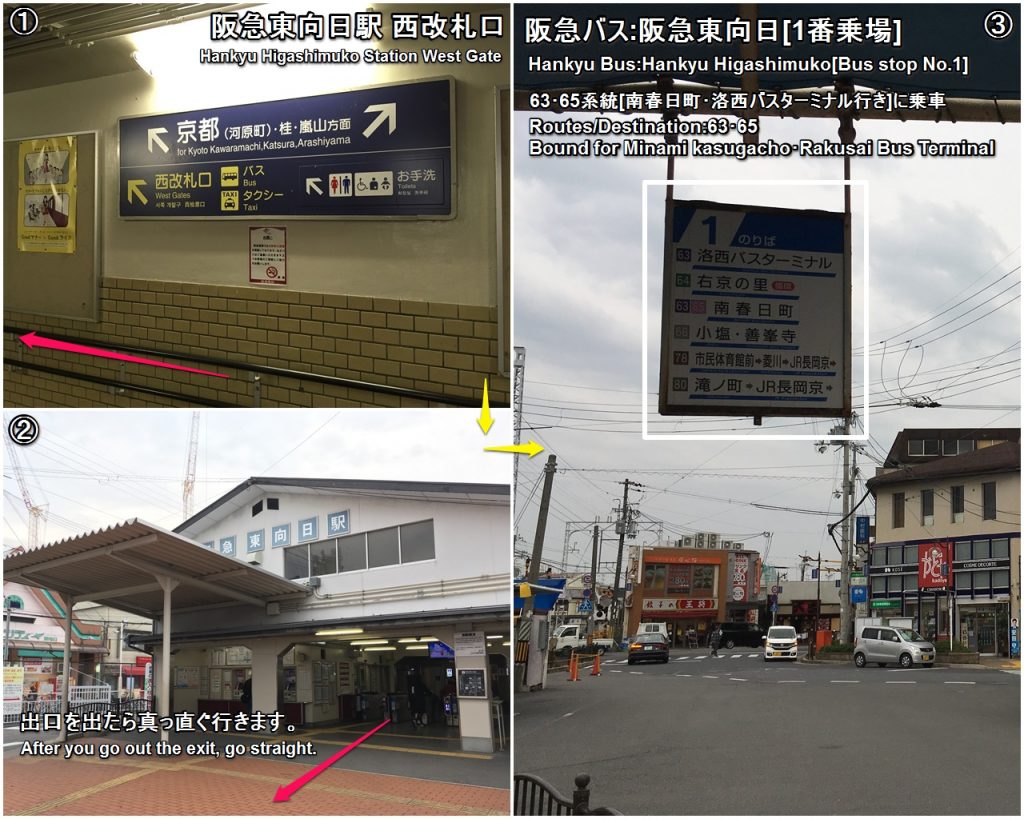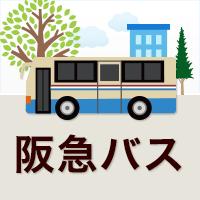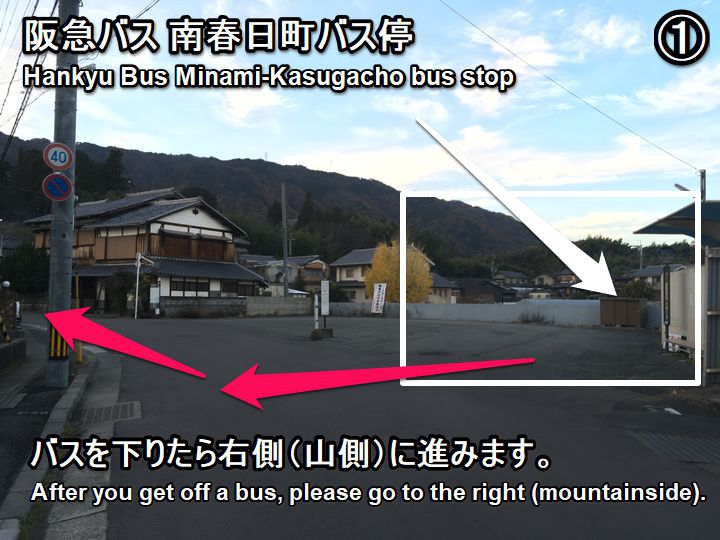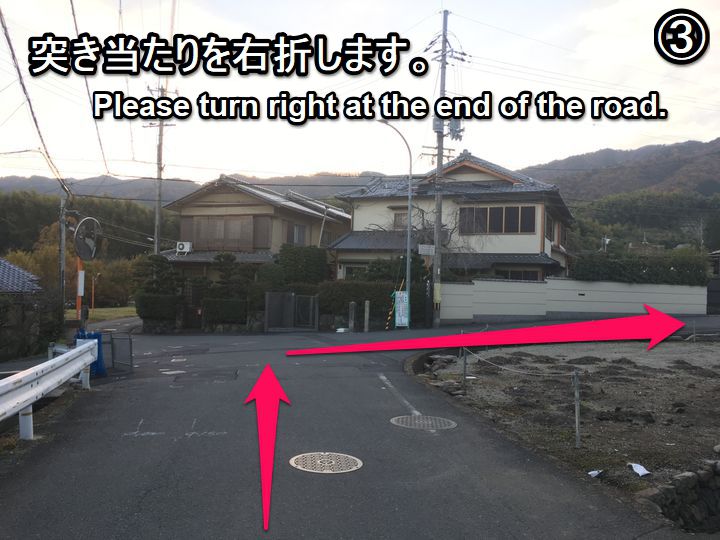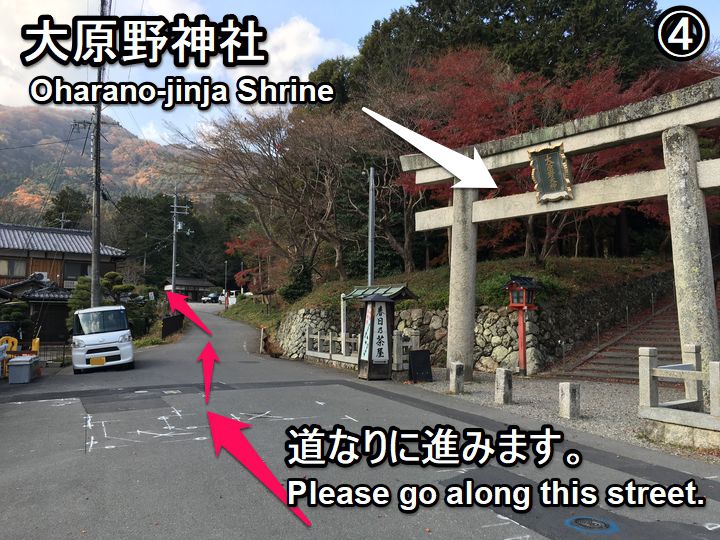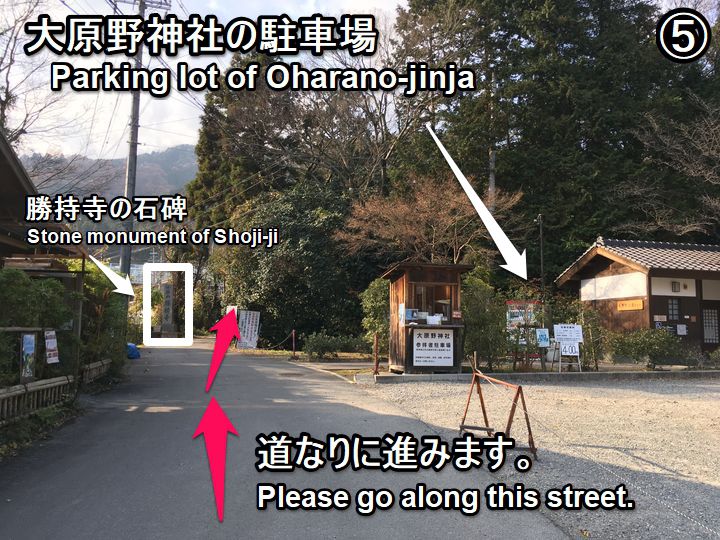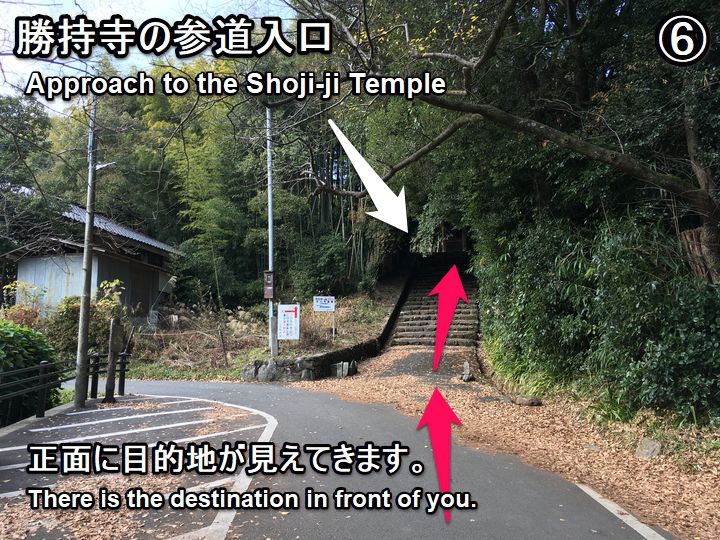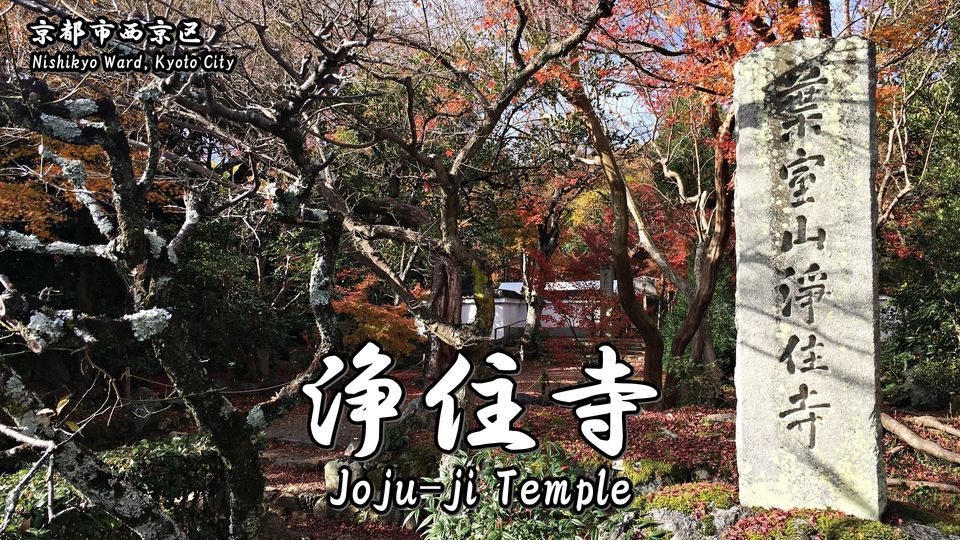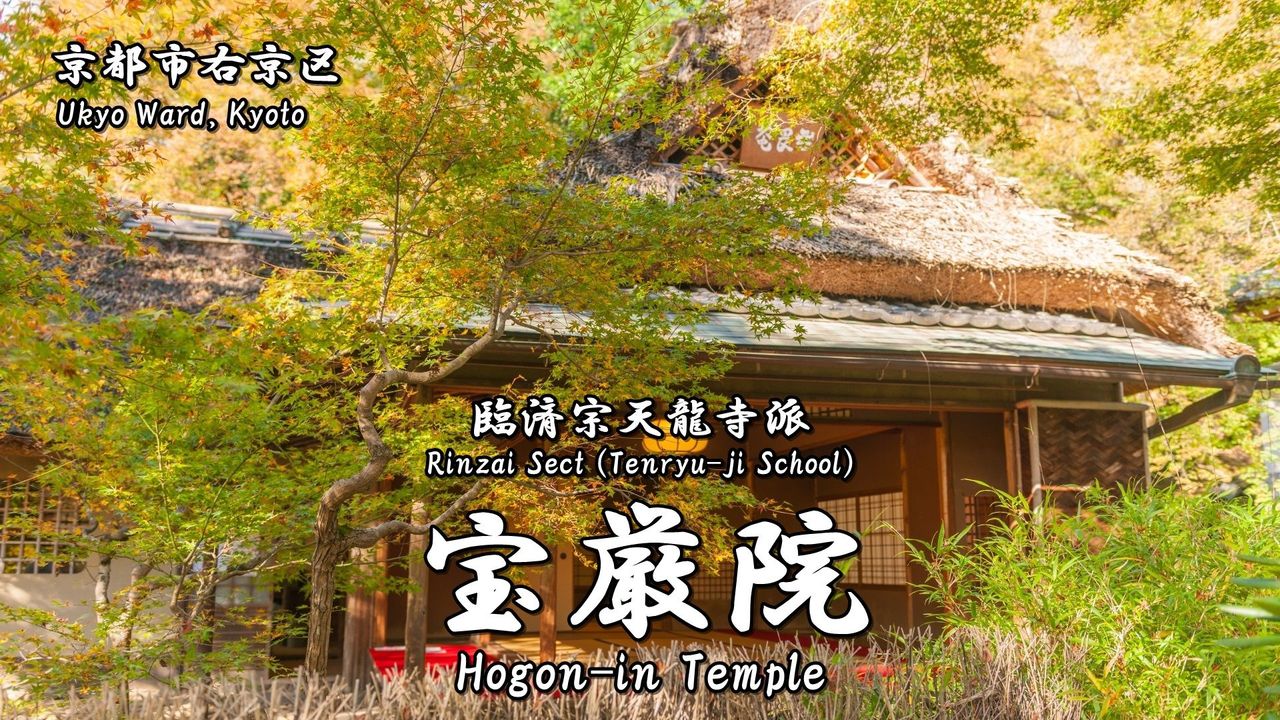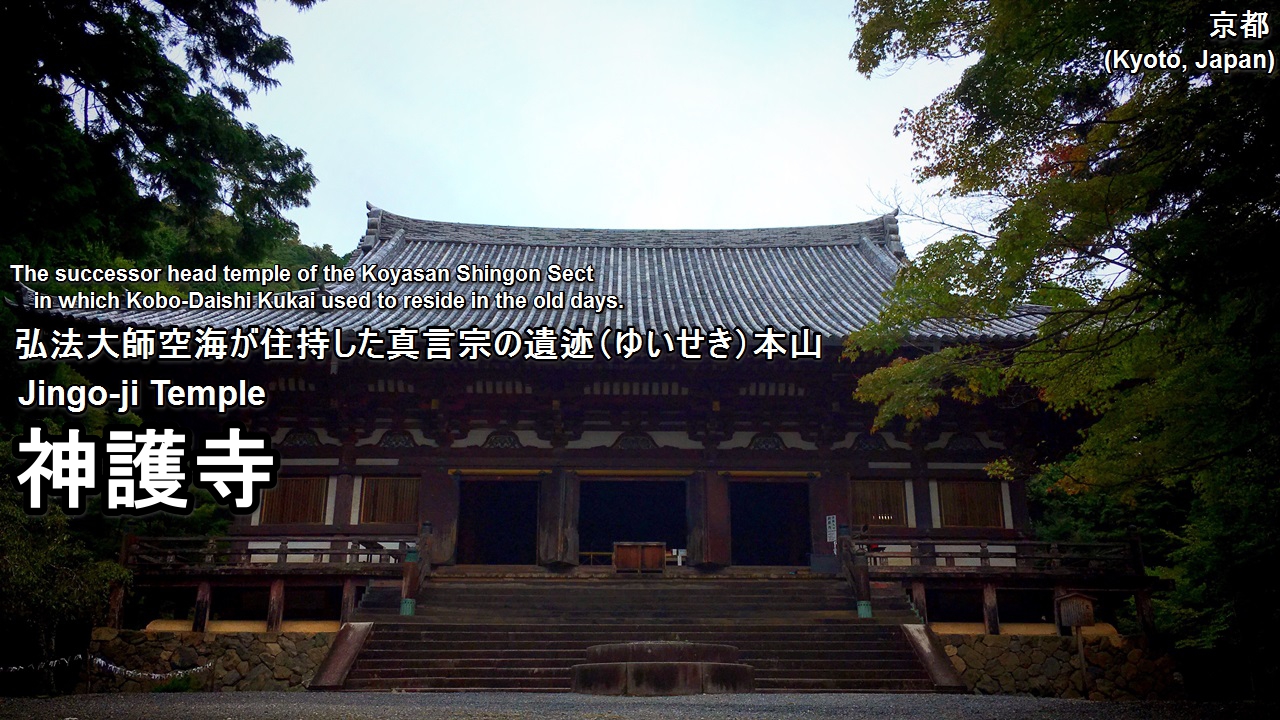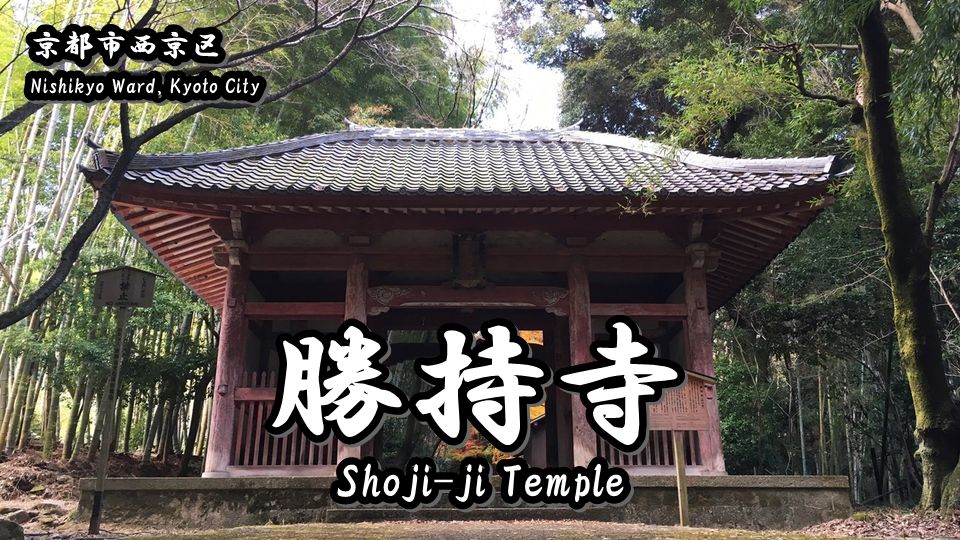 Shoji-ji (勝持寺) is a Tendai Sect (天台宗) Buddhist temple located in Nishikyo Ward, Kyoto City.
Shoji-ji (勝持寺) is a Tendai Sect (天台宗) Buddhist temple located in Nishikyo Ward, Kyoto City.
Because it is famous for its cheery blossom, it is also called ‘Temple of Flowers (花の寺)‘.
Inside the precincts of this temple, there is a famous cherry tree called ‘Saigyo-Zakura (西行桜)‘ which was planted by Saigyo (西行).
He was a famous monk and poet during the period between the late Heian period (平安時代) and the Kamakura period (鎌倉時代).
The Noh play (能楽) which is called ‘Saigyo-zakura’ written by Zeami (世阿弥) is modeled after this cherry tree and Saigyo.
History of Shoji-ji
Let’s study the history of this temple with me before introducing Shoji-ji.
I think that we can enjoy the sightseeing of this temple more by learning the history of it. XD
It is said that Shoji-ji was founded in 679 of the Asuka period (飛鳥時代) by EN no Ozunu (役小角).
He is also called ‘En no Gyoja’ who was the originator of Shugendo (修験道).
Afterwards, this temple went to ruin, but it was reconstructed in 791 of the Nara period (奈良時代) by Saicho (最澄) who was an initiator of the Tendai sect (天台宗).
Inside the precincts of this temple, there is a famous cherry tree called ‘Saigyo-Zakura (西行桜)’ which was planted by Saigyo (西行).
He was a famous monk and poet during the period between the late Heian period (平安時代) and the Kamakura period (鎌倉時代).
Because he was a very superior poet, even Basho MATSUO (松尾芭蕉) who was one of the greatest haiku (俳句) poets in Japan respected him.
And, this temple is the stage of a Noh play which is called ‘Saigyo-zakura (西行桜)’ written by Zeami (世阿弥).
It fell into deterioration due to conflicts such as the Onin War (応仁の乱) but was restored by Keishoin (桂昌院), a mother of Tsunayoshi TOKUGAWA (徳川綱吉), during the Edo period.
About Shoji-ji
Information
Address:1194, Oharano Minamikasugacho, Nishikyo-ku Kyoto-shi, Kyoto, 610-1153, Japan
Phone Number:+81-75-331-0601
Foundation:679
Founder:EN no Ozunu (役小角)
Sect:Tendai sect (天台宗)
Principal image:Yakushi Nyorai (薬師如来:Bhaisajyaguru)
Open
9:30 – 16:30 (visitors must enter by 16:00)
Admission Fee
| Adults | 400 yen |
| High and junior high school students | 300 yen |
| Elementary school students | 200 yen |
Other information
・February is basically closed.
・Please ask temple’s staff where you can take photos and videos.
・Worship method of a shinto shrine and a buddhist temple, please refer to the following article.
Temple’s Website
Highlights of Shoji-ji
- 仁王門:Nio-mon (Deva) gate
- 木造金剛力士立像(重要文化財):Wooden Standing Statue of Kongo Rishiki (Important Cultural Property)
- 参道:Approach to the temple
- 勝持寺子院跡:Historic site of sub-temple
- 南門:Minami-mon gate (South gate)
- 東門:Higashi-mon gate (East gate)
- 書院*:Shoin (Study hall)*
- 瑠璃光殿*:Ruriko-den hall*
- 阿弥陀堂*:Amida-do hall*
- 不動堂*:Fudo-do hall*
- 鏡石*:Kagami-ishi (stone)*
- 瀬和井の泉*:Segai-no-izumi (spring water)*
- 鐘楼堂*:Shoro (bell tower)*
- 魚籃観音*:Gyoran Kannon*
- 西行桜*:Saigyo-zakura (cherry tree)*
- 冴野の沼*:Saeno-no-numa (pond)*
This mark (*) is a pay area.
仁王門:Nio-mon (Deva) gate
Nio-mon (Deva) gate was built in the Heian period (平安時代).
Because this gate is the only building in this temple which was escaped from the Onin War (応仁の乱), it is the oldest building in this temple.
木造金剛力士立像(重要文化財):Wooden Standing Statue of Kongo Rishiki (Important Cultural Property)
Wooden standing statues of Kongo Rishiki which were made of 1285 in the Kamakura period (鎌倉時代) is enshrined on both sides of the Nio-mon gate.
参道:Approach to the temple
勝持寺子院跡:Historic site of sub-temple
In the old days, this temple had many sub temples.
Now, the stone wall of these sub temples are left beside an approach to a temple.
南門:Minami-mon gate (South gate)
Minami-mon gate (South gate) has the role as the entrance gate of this temple.
東門:Higashi-mon gate (East gate)
Higashi-mon gate (East gate) is unopened now.
書院*:Shoin (Study hall)*
Shoin (Study hall) has the role as the reception desk of this temple.
瑠璃光殿*:Ruriko-den hall*
Ruriko-den hall has the role as the treasure storehouse of this temple.
Wooden seated statue of Yakushi Nyorai (Bhaisajyaguru) which is the principal image designated as an important cultural property is worshiped in this building.
阿弥陀堂*:Amida-do hall*
Amida-do hall has the role as the mail hall of this temple.
不動堂*:Fudo-do hall*
Acala (不動明王), principal image of this hall, is carved on the rock face of the back of the building.
It is said that Kukai (空海) who is an initiator of the Shingon Buddhism (真言宗) carved this Acala image for people having the disease of eyes.
鏡石*:Kagami-ishi (stone)*
It is said that Saigyo (西行) sat down to this stone to become a priest and shaved a head.
瀬和井の泉*:Segai-no-izumi (spring water)*
This is a spring water which is called ‘Segai-no-izumi.’
This spring water is the Utamakura (歌枕) of this locale.
(Utamakura is a rhetorical concept in Japanese poetry.)
鐘楼堂*:Shoro (bell tower)*
魚籃観音*:Gyoran Kannon*
Because this Kannon holds a basket to put a fish in in a hand, he is said to be God of the fishery.
西行桜*:Saigyo-zakura (cherry tree)*
Saigyo-zakura (cherry tree) was planted by Saigyo (西行), the symbol of this temple.
Current cherry tree is the third generation.
冴野の沼*:Saeno-no-numa (pond)*
Saeno-no-numa (pond) is also the Utamakura (歌枕) of this local.
Autumn leaves of Shoji-ji
Video of Shoji-ji
Photos of Shoji-ji
Goshuin (red ink stamp) of Shoji-ji
Goshuin of this temple is “Yakushi Nyorai (薬師如来)” which is the principal image of this temple.
We can get this goshuin in the Shoin (Study hall). (300 yen)
How to get to Shoji-ji
Nearest station is “Hankyu Higashi-Muko Station” or “JR Mukomachi Station”.
We can go by bus from these station.
From Osaka Umeda Sta. to Higashimuko Sta. (by train)
Timetable and Route Search (train)
1.Get on the Hankyu Kyoto Line from Osaka Umeda Station to Higashimuko Station.
From Namba Sta. to Higashimuko Sta. (by train)
Timetable and Route Search (train)
1.Get on the Osaka Metro Midosuji Line from Namba Station to Umeda Station and change to the Hankyu Kyoto Line.
2.Get on the Hankyu Kyoto Line from Umeda Station to Higashimuko Station.
From Kyoto Sta. to Mukomachi Sta. (by train)
Timetable and Route Search (train)
1.Get on the JR Kyoto Line from Kyoto Station to Mukomachi Station.
From Hankyu Higashi-Muko Station to Minamikasugacho bus stop (by bus)
Get on a bus from Hankyu Higashimuko Station
Timetable and Route Search (bus)
Please get on a Hankyu Bus from Hankyu Higashimuko bus stop [No.1] (Bus No.63 or 65) and get off Minami kasugacho bus stop.
Bus company:Hankyu Bus
Routes/Destination:No.63 or 65 [Bound for Rakusai Bus Terminal]
Boarding bus stop:Hankyu Higashimuko [No.1]
Alighting bus stop:Minami kasugacho
Bus fare:300 yen
Time required:About 18 min
Get on a bus from JR Mukomachi Station
Timetable and Route Search (bus)
Please get on a Hankyu Bus from JR Mukomachi bus stop [No.2] (Bus No.63 or 65) and get off Minami kasugacho bus stop.
Bus company:Hankyu Bus
Routes/Destination:No.63 or 65 [Bound for Rakusai Bus Terminal]
Boarding bus stop:JR Mukomachi [No.2]
Alighting bus stop:Minami kasugacho
Bus fare:300 yen
Time required:About 25 min
From Minamikasugacho bus stop to Shoji-ji (on foot)
It is about 20-minute walk from the bus stop to the destination.
Take a taxi
From Hankyu Higashimuko Station:about 2,500 yen (15 minutes)
From JR Mukomachi Station:about 2,700 yen (about 20 minutes)
From Kyoto Station:about 5,000 yen (30 minutes)
・Let’s show a taxi driver the following phrase.
・If you want to call a taxi, let’s show the following phrase.
Phone number of taxi dispatch (Hankyu Higashi-Muko Station)
Hotel search & reservation around Shoji-ji
How did you like it?
Have a nice trip!

